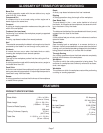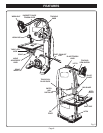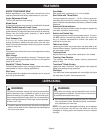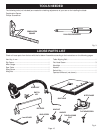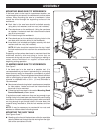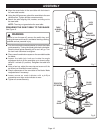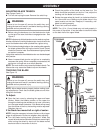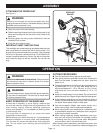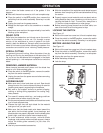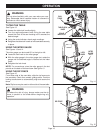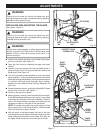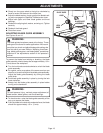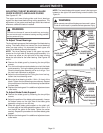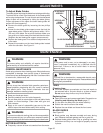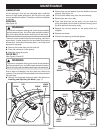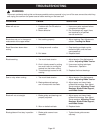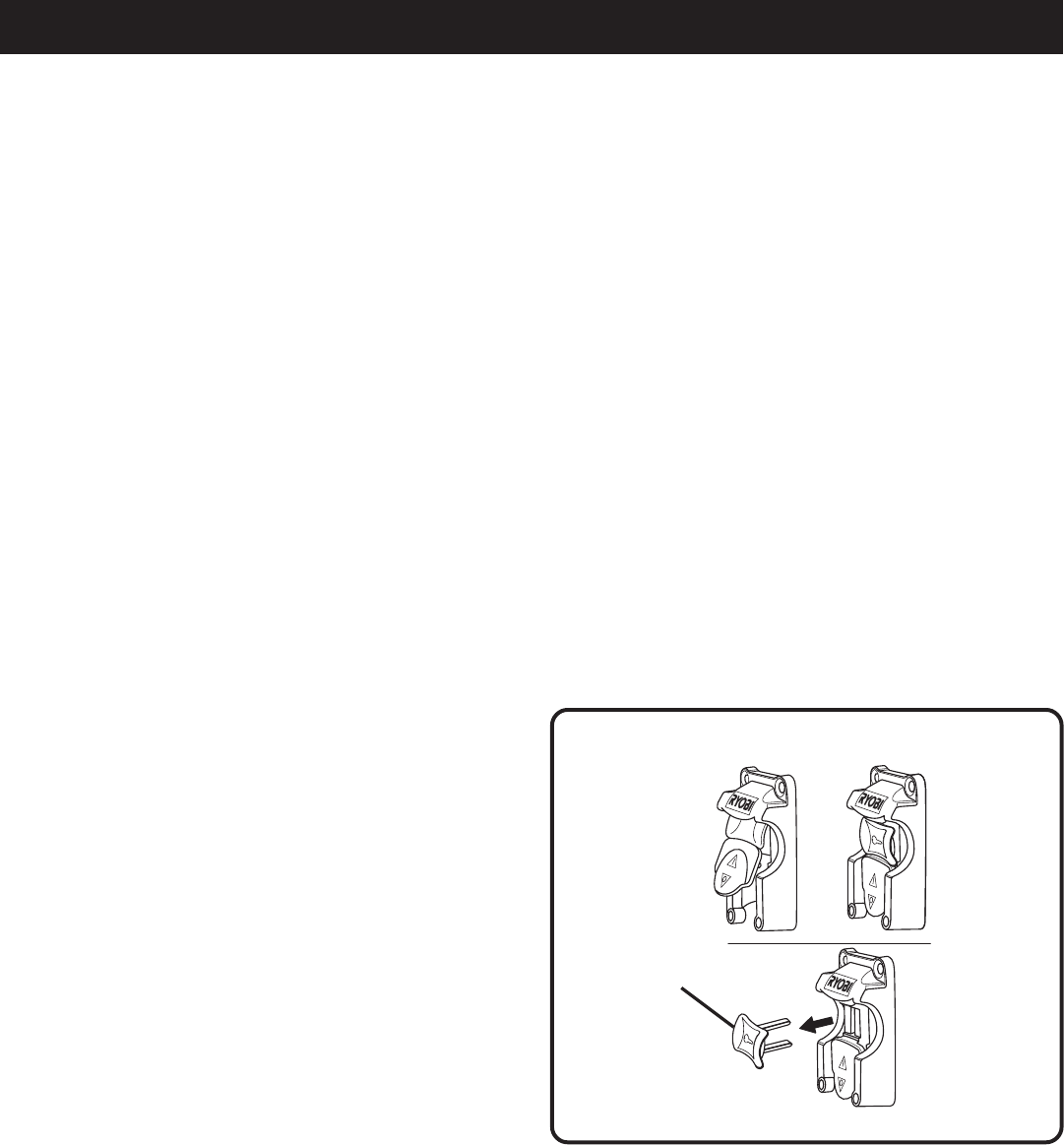
Page 15
OPERATION
kerf or when the blade comes out of the guides. If this
happens:
Wait until the saw has come to a full and complete stop.
Place the switch in the OFF position then remove the
switch key from the switch assembly. Store key in a safe
place.
Unplug the saw from the power source.
Wedge the kerf open with a flat screwdriver or wooden
wedge.
Open front cover and turn the upper wheel by hand while
backing up the workpiece.
RELIEF CUTS
Relief cuts are made when an intricate curve (too small a
radius for the blade) is to be cut. Cut through a scrap
section of the workpiece to curve in pattern line then
carefully back the blade out. Several relief cuts should be
made for intricate curves before following the pattern line
as sections are cutoff of curve “relieving” blade pressure.
SCROLL CUTTING
For general type scroll cutting, follow the pattern lines by
pushing and turning the workpiece at the same time. Do
not try to turn the workpiece while engaged in the blade
without pushing it – the workpiece could bind or twist the
blade.
REMOVING JAMMED MATERIAL
Never remove jammed cutoff pieces until the blade has
come to a full and complete stop.
Place the switch in the OFF position, remove the switch
key from the switch assembly.
Unplug the saw from the power source before removing
jammed material.
AVOIDING INJURY
Make sure saw is level and does not rock. Saw should
always be on a firm, level surface with plenty of room for
handling and properly supporting the workpiece.
Bolt saw to the support surface to prevent slipping,
walking or sliding during operations like cutting long,
heavy boards.
Turn saw off, remove switch key, and unplug cord from
the power source before moving the saw.
Do not remove jammed cutoff pieces until blade has come
to a full and complete stop.
Choose the right size and style blade for the material
and type of cut you plan to do.
Make sure that the blade teeth point down toward the
saw table, that the blade guides, thrust bearings, and
blade tension are properly adjusted, that the blade guide
knob is tight, and that no parts have excessive play.
To avoid accidental blade contact, minimize blade
breakage, and provide maximum blade support, always
adjust the blade guide assembly to just clear the
workpiece.
Use only recommended accessories.
With the exception of the workpiece and related support
devises, clear everything off the saw table before turning
the saw on.
Properly support round materials such as dowel rods or
tubing because they have a tendency to roll during a cut
causing the blade to “bite”. To avoid this, always use a
“V” block or clamp workpiece to a miter gauge
Before removing loose pieces from the saw table, turn
saw off and wait for all moving parts to stop.
LOCKING THE SWITCH
See Figure 12.
Wait until the saw has come to a full and complete stop.
Place the switch in the OFF position, remove the switch
key from the switch assembly. Store key in a safe place.
BEFORE LEAVING THE SAW
See Figure 12.
Wait until the saw has come to a full and complete stop.
Place the switch in the OFF position, remove the switch
key from the switch assembly. Store key in a safe place.
Unplug the saw from the power source.
Make workshop childproof.
Lock the shop.
ON
OFF
SWITCH
KEY
Fig. 12



